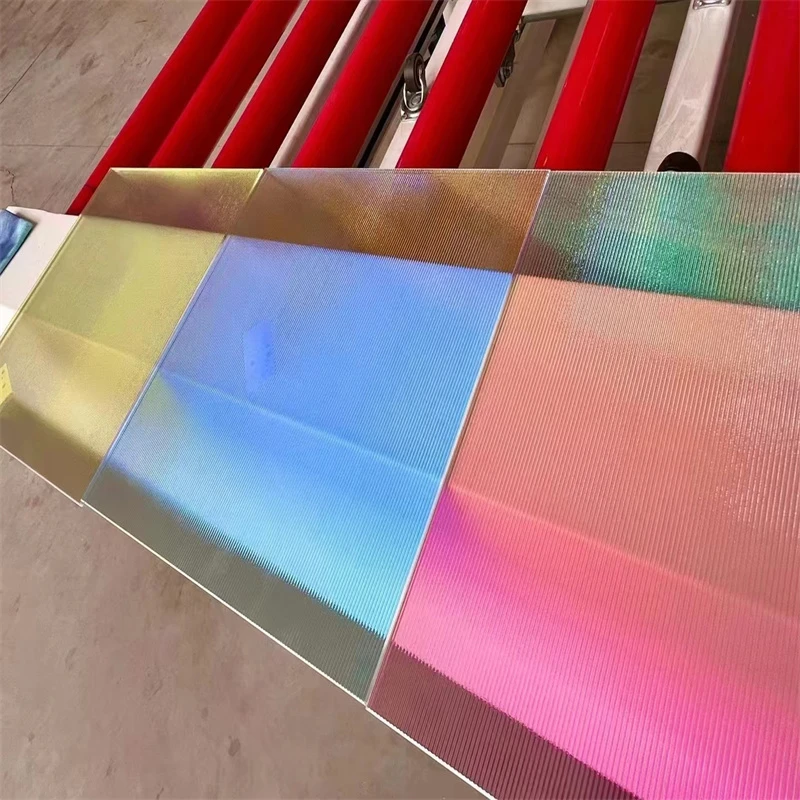Nov . 27, 2024 05:24 Back to list
Reflective Glass Aesthetics for Modern Interior Design Solutions
The Mirror Glass Design Concept Reflections of Elegance and Modernity
Mirror glass design has emerged as a significant trend in contemporary architecture and interior décor, captivating designers and homeowners alike with its unique ability to play with light, enhance space, and create an aura of elegance. The use of reflective surfaces has transcended mere functionality, evolving into an artistic expression that harmonizes the modern aesthetic with timeless sophistication.
At its core, mirror glass design capitalizes on the inherent properties of glass. The reflective quality not only allows for the manipulation of light but also creates a seamless illusion of expansiveness. In smaller spaces, such as apartments or boutique commercial settings, the strategic use of mirror glass can amplify natural light, making areas feel larger and more open. Walls, ceilings, and even furniture outfitted with mirror glass can transform an ordinary room into an extraordinary space, evoking a sense of luxury without relying heavily on elaborate decorations.
Furthermore, mirror glass surfaces possess a dual functionality. They serve both as decorative elements and functional pieces. For instance, mirrored cabinets can provide ample storage while adding a stylish flair to a room. In bathrooms, mirror glass can enhance the feeling of cleanliness and sophistication, creating a soothing retreat. The seamless integration of reflective surfaces into furniture design, such as coffee tables and side tables, allows for an elegant yet unobtrusive presence in any room.
Beyond practicality, the aesthetic appeal of mirror glass design cannot be overstated. It lends itself to a variety of design styles—be it minimalist, contemporary, or even traditional. In minimalist spaces, mirror glass can create striking focal points that command attention without overwhelming the eye. In contrast, in more eclectic environments, it can offer a playful juxtaposition against colorful artwork or textured furnishings, enriching the overall design narrative.
mirror glass design

Color plays a pivotal role in mirror glass design. While traditional mirror glass is often a flawless silver, advancements in technology have introduced tinted mirror glass, paving the way for innovative applications. Bronze, grey, and even colored mirror glass have become popular options for designers looking to add depth and character to their projects. These variations can soften the harshness of bright light while maintaining a chic aesthetic that encourages creativity and personalization within a space.
The environmental aspect of mirror glass design is also worth noting. With growing awareness of sustainable design practices, many manufacturers have shifted towards using eco-friendly materials and processes in the production of mirror glass. This shift not only reduces the carbon footprint associated with furniture and interior design but also appeals to a more environmentally conscious consumer base that values sustainability without compromising style.
In public spaces, mirror glass design contributes to a relevant theme of transparency and connection. In commercial venues, such as restaurants and hotels, mirrors can create an inviting atmosphere that encourages social interaction. The reflective surfaces can also serve to guide the flow of movement within a space, directing the eye towards focal points and enhancing the overall guest experience.
However, while mirror glass design offers extensive benefits, it does require mindful consideration in its application. One must account for the potential for glare, especially in environments flooded with natural light. Furthermore, the maintenance of mirror surfaces can be more demanding than traditional materials, as they require regular cleaning to avoid streaks and smudges. Designers must weigh these factors against the visual allure of mirrored surfaces to ensure the concepts are both beautiful and practical.
In conclusion, mirror glass design reflects a synthesis of art and functionality that resonates in today's interiors. It invites exploration and experimentation, pushing the boundaries of traditional design. As our spaces continue to evolve with technology and changing lifestyles, the role of mirror glass will undoubtedly expand, reaffirming its place as a staple in modern architecture and interior design. With its ability to evoke elegance, create illusions of space, and integrate sustainability into our environments, mirror glass stands as a beacon of contemporary style and inventive thinking. The future of design is bright, and with it, the timeless allure of reflective beauty will surely remain an integral part of our visual experience.
-
Safety and Style with Premium Laminated Glass Solutions
NewsJun.24,2025
-
Reinvents Security with Premium Wired Glass
NewsJun.24,2025
-
Premium Float Glass Line for Modern Architecture
NewsJun.24,2025
-
Low Emissivity Glass for Energy-Efficient Architecture
NewsJun.24,2025
-
High-Performance Insulated Glass Solutions for Modern Architecture
NewsJun.24,2025
-
Elevates Interior Style with Premium Silver Mirror
NewsJun.24,2025
Related PRODUCTS














